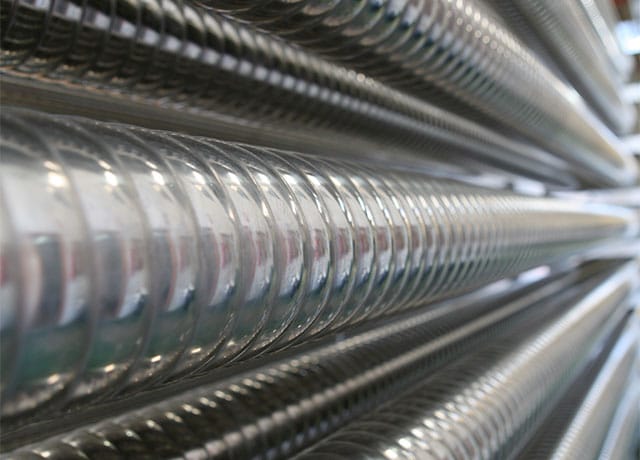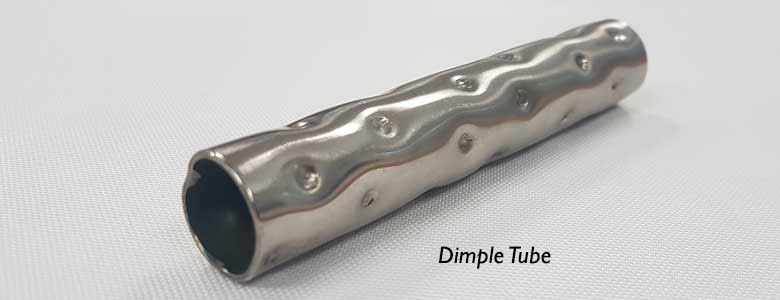Corrugations best for efficiency in tubular heat exchangers

There are many different types of tubular heat exchanger on the market, such as annular space, double tube and multitube, as well as those with different geometries including the use of internal fins, dimples and corrugations. We have written several articles explaining why corrugated tubes are our preferred design option, but it is worth reiterating.
The benefits of corrugated tubes include:
- Increased efficiency:
In a smooth tube, fluids generally follow a smooth path in which the particles do not interfere with each other. This is known as laminar flow. However, in the case of corrugated tubes, this smooth flow is disrupted causing tiny whirlpool regions to form and creating turbulence (turbulent flow). This makes heat exchangers more efficient and prevents materials from dropping out of suspension. - Longer running times:
Preventing the formation of a boundary layer in the tube reduces the downtime needed to keep removing fouling. Therefore, operational run times are much longer, further increasing the overall efficiency of the process. - Smaller footprint:
Because a corrugated tube has an increased heat transfer rate the heat exchanger can be made smaller. Depending on the application, a corrugated tube heat exchanger can be up to half the size of its smooth tube equivalent. - Easier maintenance and cleaning:
For certain viscous materials, corrugated tubes provide enough turbulence to prevent the need for mechanical agitation. With no moving parts, a corrugated tube is much easier to clean and maintain than a scraped-surface heat exchanger and may also prove more reliable; although there are applications where a scraped surface heat exchanger is the preferred option.
Corrugated vs dimpled tubes

Dimpled tubes, which feature dimples or deep impressions along the tube surface, are often promoted as an improved solution to smooth tube heat exchangers when dealing with viscous materials. Having previously offered dimpled tubes as an option, and analysed their heat transfer performance, HRS has concluded that dimpled tubes offer no discernible improvement in thermal efficiency over smooth tube heat exchangers.
Recent advances in modelling technology show that one of the ways that corrugated tubes prevent the formation of fouling layers and improve thermal efficiency is by creating eddies at the periphery of the tube; this agitation helps prevent the formation of a boundary layer. However, these eddies are not created by dimpled tubes.
Furthermore, the design of a corrugated tube provides a consistent profile which is essential to reduce the pressure drop along the heat exchanger, particularly when dealing with very viscous or when long lengths are required. Some designs of dimpled tubes have the potential to create pinch-points between the indentations along the tube, increasing the likelihood of blockages and increasing the pressure drop.
When taken together, the benefits of corrugated tubes are significant. The increased heat transfer efficiency afforded by corrugated tubes, particularly at higher flow rates, means that less heat transfer area is required, enabling us to produce shorter, more compact designs which are also cheaper to manufacture, delivering both cost and efficiency savings to our customers.